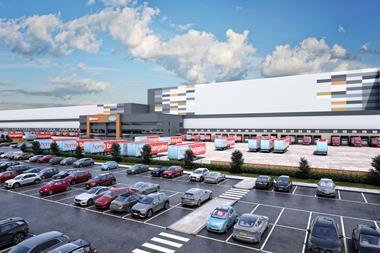There was a grim start to the IGD Supply Chain Summit in London this week.
The organisation’s chief economist told delegates the industry was facing 20 years of turmoil, which would cause them to reassess fundamental parts of their business models.Presentations from the likes of Tesco, Asda, Morrisons, Nestlé and Kraft made it clear where much of this change will have to come from, with a relentless drive for greater supply chain efficiency.
New research by IGD shows retailers and suppliers are already being forced to tear up the rulebook, reducing lead times for deliveries and improving availability of products despite slashing the amount of stock held in stores and distribution centres, as retailers consolidate their warehouse space.IGD quizzed more than 300 suppliers and retailers across the globe, and found that more than 60% of retailers and more than half of suppliers expect lead times for deliveries to reduce by up to a day within the next five years.
But that’s just the tip of the iceberg. More than one in 10 retailers and nearly one in five suppliers said they expected lead times to fall by up to two days, with a sizeable chunk of retailers looking for even more drastic change.
As a result of the pressure to meet consumer demand while still keeping prices low, retailers are cutting their inventories by holding stock in fewer locations, with each serving more stores. They are requiring more categories to be ‘stockless’ - holding products for less than 24 hours before they are needed in store. The result, despite the huge pressure on manufacturers, suppliers and retailers to protect the environment, is likely to be more and more frequent deliveries, with smaller and more targeted loads.
Lars Olofsson, chairman and CEO of French giant Carrefour, recently spoke of his frustration that his operation in China could achieve 98% availability with far less inventory held in stock than in places like France. He spoke of a vision of a “zero zero” gameplan, in which zero products would be out of stock and zero in the warehouse.
“It clearly is a massive ambition but we’re seeing this vision drive change right across the supply chain,” says Richard Jones, senior supply chain analyst at IGD. “For the first time ever when you look at a corporate management statement the supply chain sits at the top.”
IGD’s research finds more than a quarter of orders for chilled and fresh food are already “day one for day one”. “My expectation is that it’s going to get very close to a 12-hour lead time for many of the fast-moving categories,” predicts Jones, who points to companies like Tesco, which aims to have deliveries for such categories arriving in store by 6am.
Asda supply chain director Gavin Chappell admits the drive to a more efficient supply chain is also being forced on suppliers and teams like his own because of the cut-throat battle in stores over price. “Our traders are turning to the supply chain people and saying you have to help us out here, we’re not going to pass these reductions on to the consumer,” he says. Yet he adds it does not have to mean all bad news, adding: “Necessity is the mother of invention.”
The IGD report also shows the supply chain sector is going to go through the mother of all change across all product categories.
While those in the chilled and fresh sector are most exposed to demands for shorter and shorter lead times, those who told the researchers they expected to see order frequencies increase to once a day or more extend across ambient, frozen, drinks and personal care. “A few years ago suppliers would have been up in arms at some of the things happening,” says one senior supply chain boss. “Now they are becoming an everyday reality for all of us.”
Sign in to comment on this article
Not logged in before? Register for FREE guest access today.
You will be able to:
- Read more stories
- Receive daily newsletters
- Comment on stories
Advert



















No comments yet